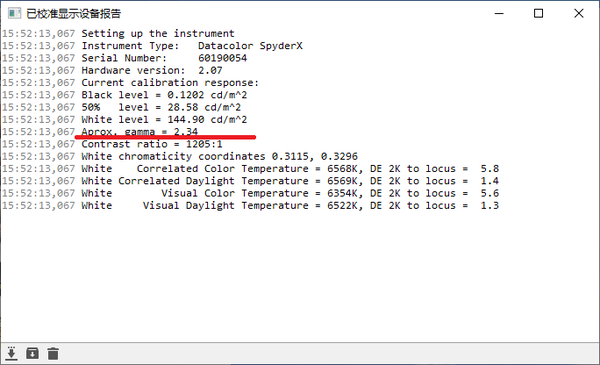


- ARGYLL EXECUTABLES DISPLAYCAL INSTALL
- ARGYLL EXECUTABLES DISPLAYCAL DRIVERS
- ARGYLL EXECUTABLES DISPLAYCAL UPDATE
- ARGYLL EXECUTABLES DISPLAYCAL DRIVER
- ARGYLL EXECUTABLES DISPLAYCAL DOWNLOAD
ARGYLL EXECUTABLES DISPLAYCAL UPDATE
icc, you can use IccXML to convert to an XML, update the ascii description before reencoding back to an. icc that declares itself as something different which can be very confusing. I have seen that sometimes on multi monitor setups the monitor name is not always correct - this results in an. Once the profile is generated, it will have an embedded description which typically is the monitor name, date and the test coverage. The difference between high (~95mins) vs medium (~55mins) with auto optimised is noticable. test chart - auto optimised/adjustable number of patches vs specific test charts/fixed number of patches.The default calibration settings (under Profiling on the main display page) aims to produce a high quality profile but at the expense of time. icc and import it into color etc.įrom the initial screen ensure the Mode is set correct for your monitor type (backlight WLED,CCFL etc) which can be verified here. Now with this, we can perform the calibration and pick up the generated. Once Displa圜AL is complete, quit out of that and then stop the main running container: podman stop displaycal.
ARGYLL EXECUTABLES DISPLAYCAL INSTALL
icc out of the container - of course we can also install scp but this is not necessary as we have shared the local $HOME/.local/share/Displa圜AL with container where the container will have written the profiling information. Remember, once the container is stopped the data generated will be lost so you must have a way to get the generated. Whilst Displa圜AL is running, remember to disable screensavers and monitor power saving to ensure the calibration tool can continue to measure correctly. icc profile as this is the location used within the container and mapped to your locahost. local/share/Displa圜AL will provide an easy way for you to retreive your generated. The -device ensures that the container can see the USB colour calibration device and the volume mounts on /tmp/.X11 will allow the container to reach the localhost's X display. # attach to running container to launch 'dispal圜AL' tool v $HOME/.local/share/Displa圜AL:/root/.local/share/Displa圜AL \ device /dev/bus/usb/:/dev/bus/usb -net=host \ # can use 'podman -f displaycal' to check the log # on the terminal, otherwise the container will run in the background # add '-it' to the command below if you want to see what is happening (not a lot) # start a container named 'displaycal' for ease of referencing later The following will give us the build configuration and build us an image tagged as f31-displaycal Using docker or podman we can to create an image as normal but the only complications is that we require the X11 subsystem and we will rely on some of the systemd like services. I'll only cover the latter option above since its the apparently easier option, particularly since the calibration measurement can take around 90-100 minutes, you can run the Displa圜AL container on your monitor whilst doing something useful on your host. run Displa圜AL from a F31 container on your current workstation.live boot media (USB/DVD) of F31 and manaully install depedancies for Displa圜AL.The last known working version of Displa圜AL on Fedora was for F31 so there are 2 options: How can we continue to use your DataColor Spyder with Displa圜AL on a recent linux? However installing this on any of the newer mid-2020 distributions (like Fedora 32 and above) has become problematic due to the python 2 requirements being dropped by a number of distributions. Contact the device manufacturer.Displa圜AL has been a great free tool to partner your hardware colour calibrator, like your DataColor Spyder etc.
ARGYLL EXECUTABLES DISPLAYCAL DRIVER
It was exceedingly generic like, “We found a compatible driver, but failed to add it to the driver store. I don’t have a screenshot that error, and I don’t have my device handy at the moment. I’ve used my i1 Display 2 many times on Windows 10, but never with the newest update, “21H2”. I was hoping that this menu option in Displa圜AL might have better luck installing.ĭevice Manager gives me a very generic error and nothing in the Windows Event Log was illuminating on what the issue could be.

ARGYLL EXECUTABLES DISPLAYCAL DOWNLOAD
I did notice that the Argyll download contains a “USB” folder that contains drivers, but I tried pointing the Windows Device Manager at that folder and got it’s own error. Is there any way to download this package manually? I tried searching with Google, but it was no help, and the ArgyllCMS website is archaic and I didn’t find anything there other than a download of the binaries. > Key does not exist: “There is no item named u’Argyll_V2.3.0_USB_driver_installer.exe’ in the archive”
ARGYLL EXECUTABLES DISPLAYCAL DRIVERS
When I try to download the instrument drivers using Tools > Instrument > Install ArgyllCMS drivers, I get the following error:


 0 kommentar(er)
0 kommentar(er)
